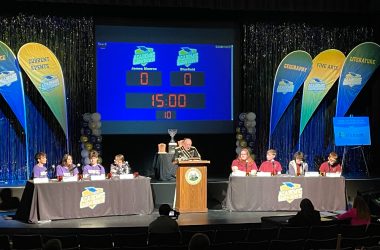By PHIL KABLER
Charleston Gazette-Mail
“I’m not uncomfortable saying north of $400 million,” Kiss told the Joint Committee on Finance.
Kiss said there is a “significant structural hole” in the state’s financial picture, which extends out through the length of the six-year budget forecast.
“The real challenge here, if you’re going to solve the problem, which is a structural hole in the budget, you can’t do it with across-the-board cuts,” Kiss told legislators.
Gov. Earl Ray Tomblin has cut state spending by more than $400 million over the past three years with a series of across-the-board cuts, including a 2 percent mid-year cut ordered last month.
Kiss said Tomblin believes additional across-the-board cuts would require layoffs and elimination of services.
“He believes he’s across-the-board cut about as much as he can,” Kiss said.
Kiss noted that structural adjustments to the budget, such as changing the School Aid Formula or restructuring higher education, requires passage of legislation.
“The governor can’t do that by himself,” he said.
For the first five months of the current budget year, through November, tax collections are running $91.5 million below estimates, and are running slightly ahead of the same point in 2015 only because of the July 1 increase in tobacco taxes and a $10 million transfer from the Workers’ Compensation trust fund, Deputy Revenue Secretary Mark Muchow said.
Muchow said the revenue estimates assumed that there would be modest improvement in the state economy, including a 1 percent increase in employment, that has yet to materialize.
Kiss said the state is on pace to finish the current budget year, next June 30, with a $165 million budget shortfall.
He said the mid-year spending cuts will save about $60 million, while the total funding to be transferred from Workers’ Comp will provide $25.5 million.
Kiss said Tomblin will offer proposals in January to close the remainder of the budget gap.
“We believe we are close enough so we can present to you some responsible solutions to close the rest of that gap,” he told the Finance Committee members.
Also during Tuesday’s Joint Committee meeting:
Investment Management Board Executive Director Craig Slaughter predicted that what he calls the “Trumpenomics” of de-globalization, increased federal fiscal spending and tax cuts will likely result in inflation, economic growth and a strong dollar.
While that should mean some positive growth for stocks, high inflation could result in a bear market for bonds, he said.
“Inflation is terrible for bonds,” Slaughter said.
That will make it challenging for the IMB to reach its goal of 7.5 percent return on investments with a current 60-40 ratio of stocks to bonds.
“As a note of caution, it’s going to be a tough world, from an investment standpoint,” he said.
On a positive note, Consolidated Public Retirement Board Executive Director Jeffrey Fleck cited a Pew Charitable Trust study showing that West Virginia is best in the nation in terms of net amortization of its pension funds and is one of only 15 states to achieve positive amortization in 2014.
Fleck quoted from the report: “West Virginia stands apart as having made the most progress on pension funding, increasing its funded ratio from 40 percent to 78 percent from 2003 to 2014.”
Comparatively, Kentucky has the most poorly funded state pension plans in the country, with a 35 percent net amortization, according to the study.
See more from the Charleston Gazette-Mail





